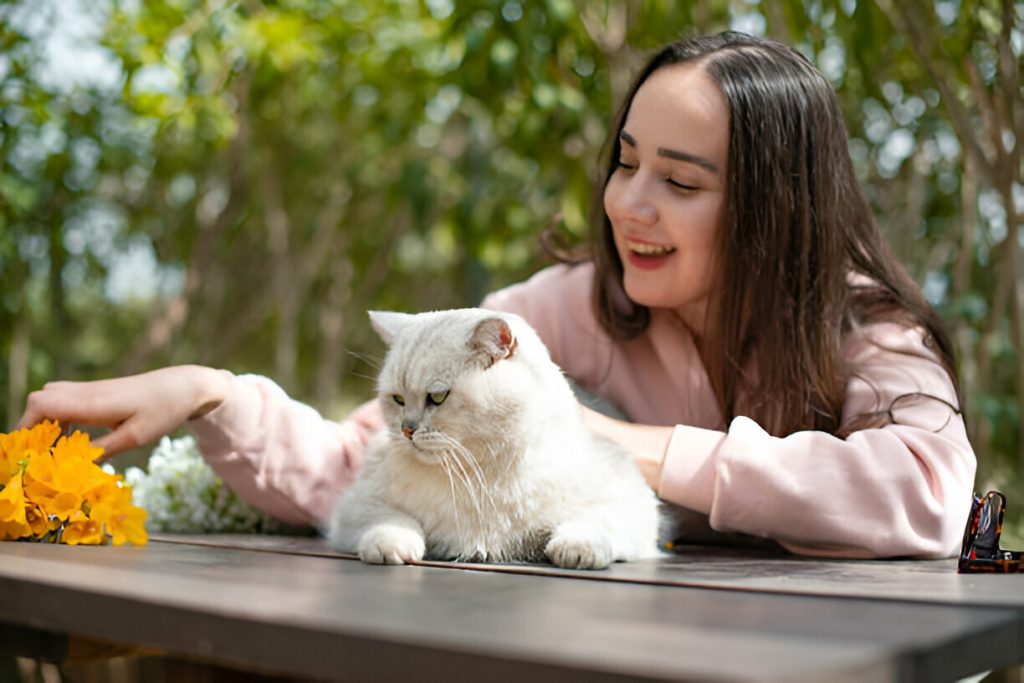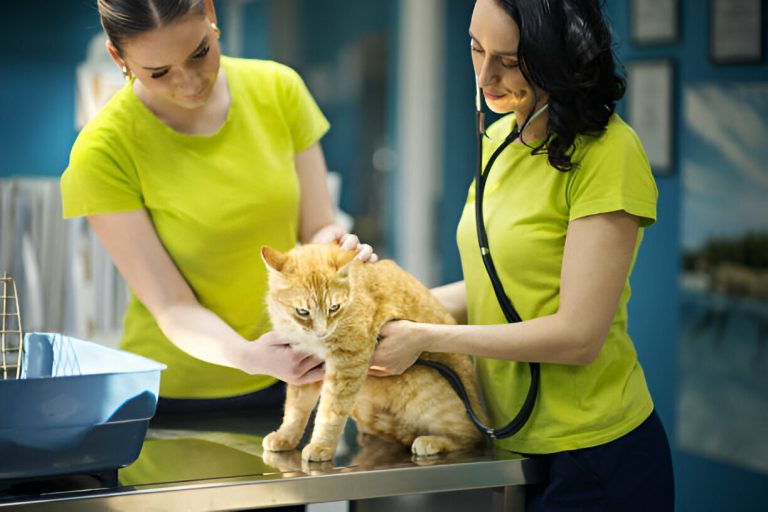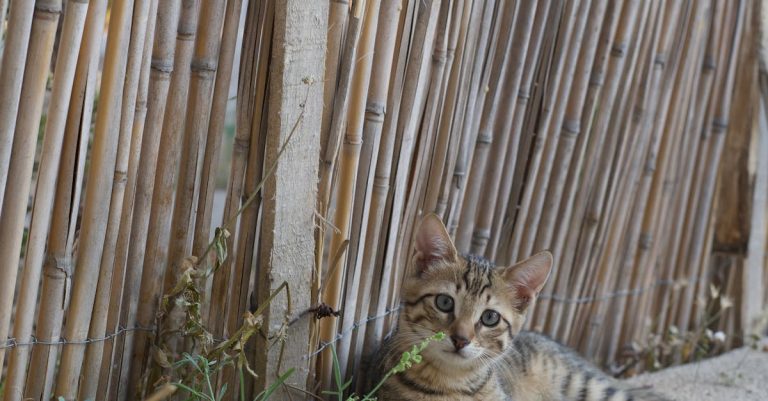Veraflox for Cats: Efficacy, Administration, and Potential Benefits

Veraflox, also known as pradofloxacin, is a fluoroquinolone antibiotic that represents a significant advancement in veterinary medicine. It is specifically developed for feline patients and is known for its broad-spectrum antibacterial efficacy. Unlike its earlier counterparts within the fluoroquinolone class, Veraflox has enhanced activity against key pathogens that affect cats and is tailored for the unique physiology of this particular animal.
One of the laudable impacts of Veraflox in treating bacterial infections in cats is its high potency against gram-negative and gram-positive bacteria, as well as mycoplasma. Its ability to inhibit bacterial DNA gyrase and topoisomerase IV, vital enzymes for bacteria reproduction, allows it to effectively thwart the spread of bacterial infections. Furthermore, Veraflox has a favorable pharmacokinetic profile that ensures adequate absorption and distribution within the feline body, making it particularly efficient in targeting skin infections, wound infections, and respiratory tract infections among other bacterial challenges faced by our feline companions.
When it comes to administration, Veraflox is notable for its convenient dosing regimen. Available in an oral suspension form, it is typically prescribed by veterinarians with a once-daily dosing schedule, which simplifies the process for pet owners. With such an administration method, it reduces the stress on both the cat and the owner, as is commonly witnessed with more frequent dosing requirements of some antibiotics. Moreover, the palatability of the oral suspension is a thoughtful feature, designed to minimize the infamous struggle of administering medication to discerning feline palates.
The potential benefits of Veraflox extend beyond its primary role as an antibiotic. Owners have reported that the improved wellbeing of their pets is noticeable, which is attributed to the rapid alleviation of infection symptoms brought about by the effective use of Veraflox. The speed with which it acts not only helps in the management of acute infections but can also reduce the chances of chronic disease development, a potential consequence of inadequately treated infections.
In the subsequent information to be shared, one would find a deeper dive into the specific facets of Veraflox’s impact on feline well-being, including any correlations between its use and the longevity and quality of life in cats. This will entail a review of published studies and firsthand accounts from the veterinary community on the outcomes of long-term Veraflox administration, further illuminating why this antibiotic has been embraced as a valuable asset in feline healthcare. This will be considered within the context of current trends in veterinary practice, with an eye towards the future of feline medicine and the continuous pursuit of optimized treatments that cater to our small but mighty pets.
- Veraflox, containing the active ingredient pradofloxacin, is a fluoroquinolone antibiotic used to treat bacterial infections in cats.
- It is particularly effective against skin infections, wound infections, and urinary tract infections caused by susceptible bacteria strains.
- The medication interferes with bacterial DNA processes, leading to the elimination of the infection-causing bacteria.
- Veraflox is available in an oral formulation, making it easier for caretakers to administer it to felines.
- It is essential to follow a veterinarian’s prescription closely, including the recommended dosage and duration, to ensure the effectiveness of the treatment and to minimize the risk of antibiotic resistance.
- Observing cats for any side effects, such as vomiting, diarrhea, or appetite changes, is important for timely intervention should adverse reactions occur.
- Potential benefits of using Veraflox include its high efficacy in treating infections, its targeted action against bacteria, and the convenient dosing options which can enhance owner compliance.
- It’s crucial not to use Veraflox in cats with a known hypersensitivity to pradofloxacin or other fluoroquinolone antibiotics to avoid allergic reactions.
- The safety of Veraflox in pregnant, breeding, or lactating cats has not been established, and therefore its use should be discussed with a veterinarian in such cases.
- The antibiotic should not be used concurrently with certain drugs, such as corticosteroids or nonsteroidal anti-inflammatory drugs (NSAIDs), without veterinary advice due to potential interactions.

How Effective is Veraflox for Treating Cats and What Are its Potential Benefits?
Veraflox, known generically as pradofloxacin, is an antibiotic belonging to the fluoroquinolone class, designed specifically for the use in veterinary medicine. This medication is effective against a broad spectrum of bacterial infections in cats. Its administration involves oral dosing with a precise calculation based on the cat’s weight, and it can be used to treat skin infections, wound infections, and urinary tract infections caused by susceptible strains of bacteria. Potential benefits of Veraflox for cats include its targeted action that disrupts bacterial DNA processes, leading to the elimination of the infection, and its once-daily dosing, which can improve treatment compliance.
Veraflox for cats is a veterinary-prescribed medication with proven efficacy against various bacterial infections. Developed with the unique needs of felines in mind, Veraflox operates by inhibiting bacterial DNA gyrase and topoisomerase IV enzymes, which are critical in the replication, transcription, and repair of bacterial DNA. Due to its selective nature, veraflox offers an advantageous treatment by minimizing the impact on beneficial bacteria within the cat’s system. Understanding the benefits and proper administration of Veraflox is pivotal for ensuring a safe and rapid recovery for feline patients suffering from bacterial infections. By adhering to the prescribed dosage and treatment duration, cat owners can optimize the therapeutic outcomes for their pets.
Antibacterial Medications in Veterinary Care
Veterinary medicine has long employed an array of antibacterial medications to combat infections in animals, ranging from antibiotics like amoxicillin to more advanced synthetics. Antibiotics in veterinary care are classified by their chemical structure and mechanism of action, with each type intended for specific kinds of bacterial infections. Aminoglycosides, for instance, are particularly effective against aerobic gram-negative bacteria and are often administered to treat severe infections. Penicillins, on the other hand, are frequently used for gram-positive bacterial infections and are known for their low toxicity in animals. Veterinary pharmacology constantly evolves to develop more effective treatments with fewer side effects, particularly as bacterial resistance becomes an increasing concern. The choices of antibacterial drugs are influenced by factors such as the type of bacteria, the site of infection, and the patient’s medical history.
Animal Weight Management and Diet Optimization
A comprehensive nutritional strategy is vital for the health and wellbeing of companion animals. Overweight and obesity in pets can lead to serious health issues like diabetes, osteoarthritis, and heart disease. Thus, veterinarians often recommend diet plans that optimize caloric intake relative to the animal’s size, age, and activity level. High-quality animal feeds are formulated to provide balanced nutrition, containing essential proteins, carbohydrates, fats, vitamins, and minerals. In some cases, therapeutic diets may be prescribed to address specific health concerns such as urinary crystals or renal failure. These diets are meticulously crafted to meet the nutritional needs while managing the medical condition. Pet owners are advised to follow a veterinarian’s guidance on portion control and the frequency of feeding to ensure their animals maintain a healthy weight.
Significance of Regular Veterinary Check-Ups
Regular veterinary check-ups are crucial to preventative healthcare in pets. These visits allow for early detection of potential health issues, providing an opportunity to address them before they escalate. During a routine examination, a veterinarian will assess the pet’s overall health, from coat condition to heart health, and may also advise on vaccination schedules as part of the preventative care. Screening tests such as blood work, urinalysis, or imaging studies like X-rays and ultrasound might be performed to detect underlying conditions. These check-ups are also an excellent opportunity for pet owners to discuss any concerns about their pet’s behavior, diet, or lifestyle. Proactive veterinary care is instrumental in extending the lifespan and improving the quality of life of companion animals.
Understanding Antibiotic Resistance in Pets
Antibiotic resistance is a significant challenge in veterinary medicine. When antibiotics are overused or improperly administered, the bacteria can mutate and develop resistance, making future infections more difficult to treat. This phenomenon is not limited to human medicine but is also a concern for animal health. Veterinarians strive to prescribe antibiotics judiciously, often based on the results of a culture and sensitivity test, to ensure the right type and dosage of antibiotics are used. Education for pet owners on the importance of following the prescribed treatment course and avoiding self-medication of pets is also essential to combat resistance. Ongoing research focuses on understanding the mechanisms of resistance and developing new treatments to ensure the continued effectiveness of antibacterial therapies in veterinary practice.
What is Veraflox and what is it used for in cats?
Veraflox, known generically as pradofloxacin, is an antibiotic medication that falls under the class of fluoroquinolones. It is specifically designed to treat bacterial infections in cats. Veraflox is effective against a broad spectrum of bacteria, including those that can cause skin infections, wound infections, and respiratory tract ailments in felines. It works by inhibiting bacterial DNA gyrase and topoisomerase IV, enzymes necessary for bacterial DNA replication, transcription, and repair, thus leading to bacterial death.
The use of Veraflox in veterinary medicine has grown due to its enhanced activity against Gram-positive bacteria, as well as certain Gram-negative bacteria, while maintaining a favorable safety profile. It is particularly helpful in treating infections that are resistant to other antibiotics, making it a valuable option for veterinarians when dealing with difficult cases of bacterial illnesses in cats.
How is Veraflox administered to cats and what is the correct dosage?
Veraflox is administered orally to cats and is available in the form of tablets or an oral suspension. The exact dosage and duration of treatment depend on the type and severity of the infection being treated, as well as the weight and overall health of the cat. It is crucial that a veterinarian prescribes the appropriate dosage to ensure efficacy and reduce the risk of side effects. Typically, the medication is given once daily, and owners should follow the dosage instructions provided by their veterinarian carefully.
It’s essential not to miss any doses and to complete the entire course of antibiotics as prescribed, even if the cat appears to have recovered. Premature cessation of the treatment could lead to a resurgence of the infection and potentially contribute to antibiotic resistance. If a dose is missed, it should be administered as soon as possible, but if it’s nearly time for the next scheduled dose, it’s better to skip the missed dose and return to the regular schedule.
What are the potential benefits of using Veraflox for treating cats?
Veraflox offers several benefits when it comes to treating bacterial infections in cats. One of its main advantages is its broad-spectrum efficacy, which allows it to combat a wide variety of bacterial pathogens. This is particularly beneficial in scenarios where the exact bacteria causing the infection have not been identified, making it a good empirical treatment option. Additionally, the convenience of once-daily dosing improves compliance, which is essential for successful treatment outcomes.
Another benefit of Veraflox is its potency against bacteria that may be resistant to other antibiotics, providing an alternative for difficult-to-treat infections. The medication also tends to be well-tolerated by cats, and because it is available in different formulations, it can be easier to administer to fussy pets that might have difficulty taking certain forms of medication.
Can Veraflox cause side effects in cats? What should pet owners look out for?
Like all medications, Veraflox may cause side effects in some cats. These side effects can range from mild to severe, though severe reactions are less common. Some potential adverse effects include gastrointestinal issues such as vomiting or diarrhea, changes in behavior, appetite loss, or lethargy. Since fluoroquinolones can affect the development of bone and cartilage, Veraflox is not recommended for growing kittens or pregnant or lactating queens unless the benefits outweigh the risks.
Pet owners should monitor their cats closely during treatment and consult their veterinarian if they observe any unusual symptoms. It’s important to report any side effects, as they may require medical attention or adjustment to the medication. If an allergic reaction is suspected, characterized by symptoms like facial swelling, difficulty breathing, or hives, immediate veterinary care is crucial.
How quickly does Veraflox start working in cats after administration?
Veraflox begins working soon after administration, as the active ingredient pradofloxacin quickly gets absorbed into the cat’s bloodstream. While the onset of action is typically rapid, it may take a few days for the visible signs of improvement to manifest. The speed of clinical improvement depends on several factors, including the severity of the infection, the overall health status of the cat, and the bacteria causing the infection.
Even if cat owners notice an improvement in their pet’s condition, it is important to continue administering the medication for the entire duration prescribed by the veterinarian. Completing the full course ensures that the infection is adequately treated and helps prevent the development of antibiotic-resistant bacteria.
Is Veraflox safe for kittens and pregnant or nursing cats?
Veraflox is generally not recommended for use in kittens due to the potential for adverse effects on the development of cartilage and bone. Since fluoroquinolones can impact joint health, veterinarians usually avoid prescribing Veraflox to young, growing kittens except when no safer alternative is available and the benefits of treatment are considered to outweigh the risks. The safety profile for pregnant or nursing cats is also a concern, and Veraflox is typically not used in these situations unless it’s deemed absolutely necessary.
If a veterinarian prescribes Veraflox for a kitten, pregnant, or nursing cat, it is usually done with caution, and the risks are carefully weighed against the benefits. In these cases, close monitoring by the veterinarian and the pet owner is essential to detect any signs of adverse effects early on. These groups of cats may require modified dosages and careful management to ensure their safety.
Can Veraflox be used in conjunction with other medications?
Veraflox may interact with other medications, which is why it is important for pet owners to inform their veterinarians about all the medicines and supplements their cat is currently taking. Certain drugs can have adverse interactions with Veraflox, such as those that affect the CNS (central nervous system) or interact with the metabolism of Veraflox. For example, concomitant use of theophylline, a bronchodilator, or warfarin, an anticoagulant, may require dosage adjustments and additional monitoring.
In general, veterinarians will evaluate the overall health and medication profile of the cat before prescribing Veraflox to ensure safety and efficacy. If necessary, alternative medications may be considered to avoid possible interactions. Owners should never adjust or add medications without consulting their veterinarian, as this could compromise the effectiveness of the treatment or jeopardize the cat’s health.
Are there any specific conditions or infections for which Veraflox is particularly effective?
Veraflox is particularly effective in treating a range of bacterial infections in cats, including skin infections (wounds and abscesses), urinary tract infections, and respiratory infections. Its broad-spectrum activity makes it a potent option against pathogens like Staphylococcus spp., Streptococcus spp., Pasteurella multocida, and E. coli. It is often used when the bacteria are known to be resistant to other antibiotics or when the infection is severe and requires a potent antibiotic.
Moreover, since Veraflox has a high bioavailability and tissue penetration, it’s effective at reaching infection sites that may be difficult to treat with other antibiotics. Its efficacy in treating deep infections and its ability to interfere with the bacterial replication process make it a valuable tool in the management of serious bacterial infections.
What should I do if my cat experiences an overdose of Veraflox?
In the event of an overdose or accidental ingestion of a higher dose of Veraflox, it is crucial to seek immediate veterinary attention. An overdose of this medication can lead to serious and potentially life-threatening symptoms such as tremors, seizures, or other neurological signs. Vomiting should not be induced without professional guidance due to the risk of aspiration or additional complications.
The veterinarian may initiate treatments such as inducing vomiting under safe conditions, administering activated charcoal to prevent further absorption, or providing supportive care to manage symptoms. Close monitoring and supportive treatments at a veterinary facility might be necessary until the effects of the overdose have subsided. It is important to provide the veterinarian with as much information as possible, including how much Veraflox was ingested and when.
Is there a need for laboratory monitoring while my cat is on Veraflox?
Laboratory monitoring while a cat is on Veraflox may be recommended, especially for prolonged treatments, in cats with existing health conditions, or when the cat is receiving other medications that could potentially interact with Veraflox. Periodic blood work, including complete blood counts and kidney and liver function tests, may be performed to monitor the cat’s response to the medication and detect any signs of potential adverse effects.
Monitoring is crucial to ensure that the medication is well-tolerated and does not cause any harm to the cat’s renal or hepatic systems. If there are any abnormalities in the lab results, the veterinarian may adjust the dose or discontinue Veraflox. Pet owners should follow their veterinarian’s recommendations regarding monitoring and report any health changes in their cats throughout the treatment period.
Final Thoughts
Veraflox for cats stands out as an effective antibacterial agent targeting a range of infections, particularly those caused by susceptible strains of bacteria. Its efficacy has been well-demonstrated in clinical settings, providing veterinarians with a reliable option for treating bacterial diseases in feline patients. When administering Veraflox, it is crucial to adhere to the prescribed dosage and duration, which generally involves an easy-to-use oral formulation that simplifies the process for cat owners.
The potential benefits of Veraflox in cats extend beyond simply curing the immediate infection; by effectively eradicating bacterial pathogens, it helps in preventing the spread of infection and the emergence of resistance. However, it’s important to use veraflox cats under appropriate veterinary guidance, as improper use can contribute to resistance or other complications.
Ensuring proper administration is key to maximizing the benefits of Veraflox for cats. Subsequent monitoring for any adverse reactions, although rare, further enhances the safety profile of this medication. Overall, veraflox cats represent an important tool in the veterinary pharmacopeia for keeping feline patients healthy, advocating for careful and judicious use in clinical practice to retain its efficacy for future needs.






